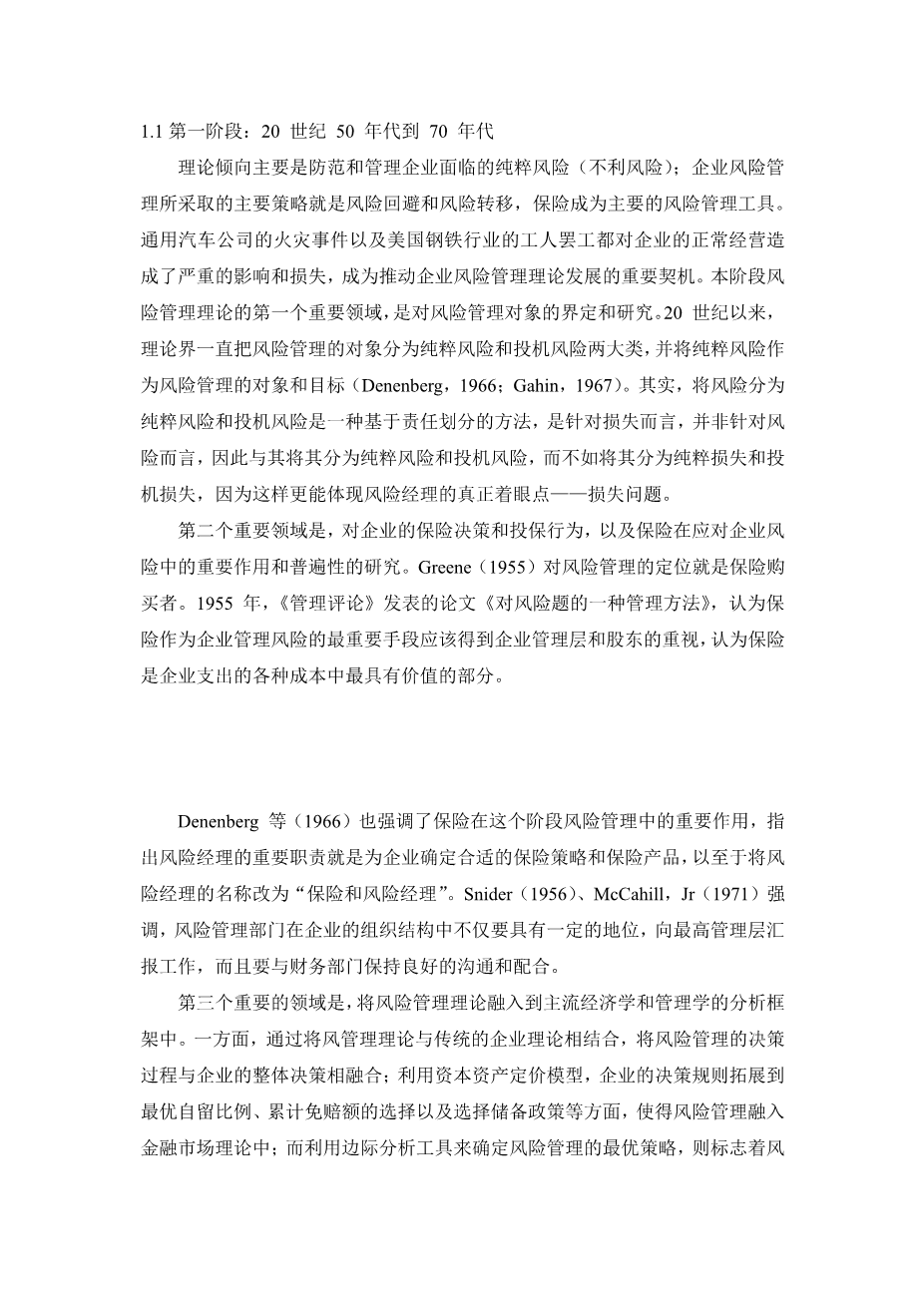企业风险管理理论的发展外文翻译资料
2023-04-01 15:56:05
文献出处: Bedard J C, Hoitash R, et al. The development of the enterprise risk management theory [J]. Contemporary Accounting Research, 2014, 30(4): 64-95.
原文
The development of the enterprise risk management theory
Bedard J C, Hoitash R
Abstract
Enterprise risk management as an important field of risk management disciplines, in more than 50 years of development process of the implementation of dispersing from multiple areas of research to the integration of comprehensive risk management framework evolution, the theory of risk management and internal audit and control theory are two major theoretical sources of risk management theory has experienced from the traditional risk management, financial volatility to the development of the enterprise risk management, risk management and internal audit and control theory went through the internal accounting control and internal control integrated framework to the evolution of enterprise risk management, the development of the theory of the above two points to the direction of the enterprise risk management, finally realizes the integration development, enterprise risk management theory to become an important part of enterprise management is indispensable.
Keywords: enterprise risk management, internal audit the internal control
1 The first theory source, evolution of the theory of risk management
'Risk management' as a kind of operation and management idea, has a long history: thousands of years ago in the west have 'dont put all eggs in one basket' the proverb, the ancient Chinese famous 'product valley hunger' allusions and 'yicang (' system,' boat was 'organization have a prototype of the modern risk management thought, and points under escort ship transportation, yuen, is effective way to spread risk, transfer risk .In the modern sense of risk management thought appeared in the first half of the 20th century, such as fayols safe production ideas, Marshalls 'risk sharing management' point of view, etc.;But risk management as a discipline system development is started in the middle of the 20th century: in 1950, gallagher in the risk management: a new stage of cost control in the paper, puts forward the concept of risk management; Johnso (1952) mentioned the problems how to deal with risks and uncertainties in farm management, which involves early enterprise (farms) of risk management problem.The emergence of risk management as a discipline real Mehr and Hedges of the enterprise risk management (1963) and C.A.Williams and Richard m. Heins 'risk management and insurance' (1964) published marked. Williams and Heins thinks, 'risk management is based on the risk identification, measurement and control to the smallest cost risk caused by the loss to the lowest level of management methods', risk management is not just a technology, a method, a kind of management process, and is a new and scientific management.The development of the theory of risk management.
-
- The first stage: the 70 s and 1950 s
Theoretical tendency mainly is the pure risk prevention and management of enterprise (adverse risk);Take the main strategy of enterprise risk management is risk avoidance and risk transfer, insurance becomes the main risk management tools. Fire events of general motors and the United States steel industry the workers went on strike to enterprises normal operation caused serious impact and losses, become an important opportunity to promote the development of enterprise risk management theory. This phase the first important area of risk management theory, is the risk management object definition and research. Since the 20th century, scholars have been the object of risk management divided into two major categories of pure risk and speculative risk, and the pure risks as the object of risk management and the target (Denenberg, 1966; Gahin, 1967).In fact, the risk can be divided into pure risk and speculative risk is a kind of method based on the responsibility, is targeted at loss, is not aimed at risk, so it can be divided into pure risk and speculative risk, but not as good as it can be divided into pure loss and speculative loss, because it can reflect the true respect of the risk manager more loss problem.
Is the second important areas, to the enterprise decision-making and of behavior, and insurance in response to the important role of enterprise risk and universality of the study. Greene (1955) orientation is insurance buyers of risk management. A paper published in 1955, the management review 'to the risk of a kind of management method', think of insurance as the most important means of enterprise risk management should be attention by the enterprise management and the shareholders, think insurance is a business spending the most valuable part of all kinds of costs. Denenberg etc. (1966) also emphasizes the insurance at this stage the important role of risk management, points out the important responsibility of the risk manager is to determine the appropriate insurance policy for the enterprise and insurance products, that will be the risk managers name changed to 'insurance and risk managers'. Snider (1956), McCahill, Jr. (1971) stressed that risk management in the enterprise organization structure not only has a certain status, report to top management work, and want to maintain good communication and coordination with the finance department.
A third important area is, the risk management theory into the analysis framework of mainstream economics and management.On the one hand, by the wind management theory combined with the traditional enterprise theory, the risk management of the decision-making process and the integration of enterprises overall decision.Using the capital asset pricing model, the decision rule of enterprise in the optimal retention ratio, cumulative fr
剩余内容已隐藏,支付完成后下载完整资料


英语译文共 7 页,剩余内容已隐藏,支付完成后下载完整资料
资料编号:[588022],资料为PDF文档或Word文档,PDF文档可免费转换为Word




